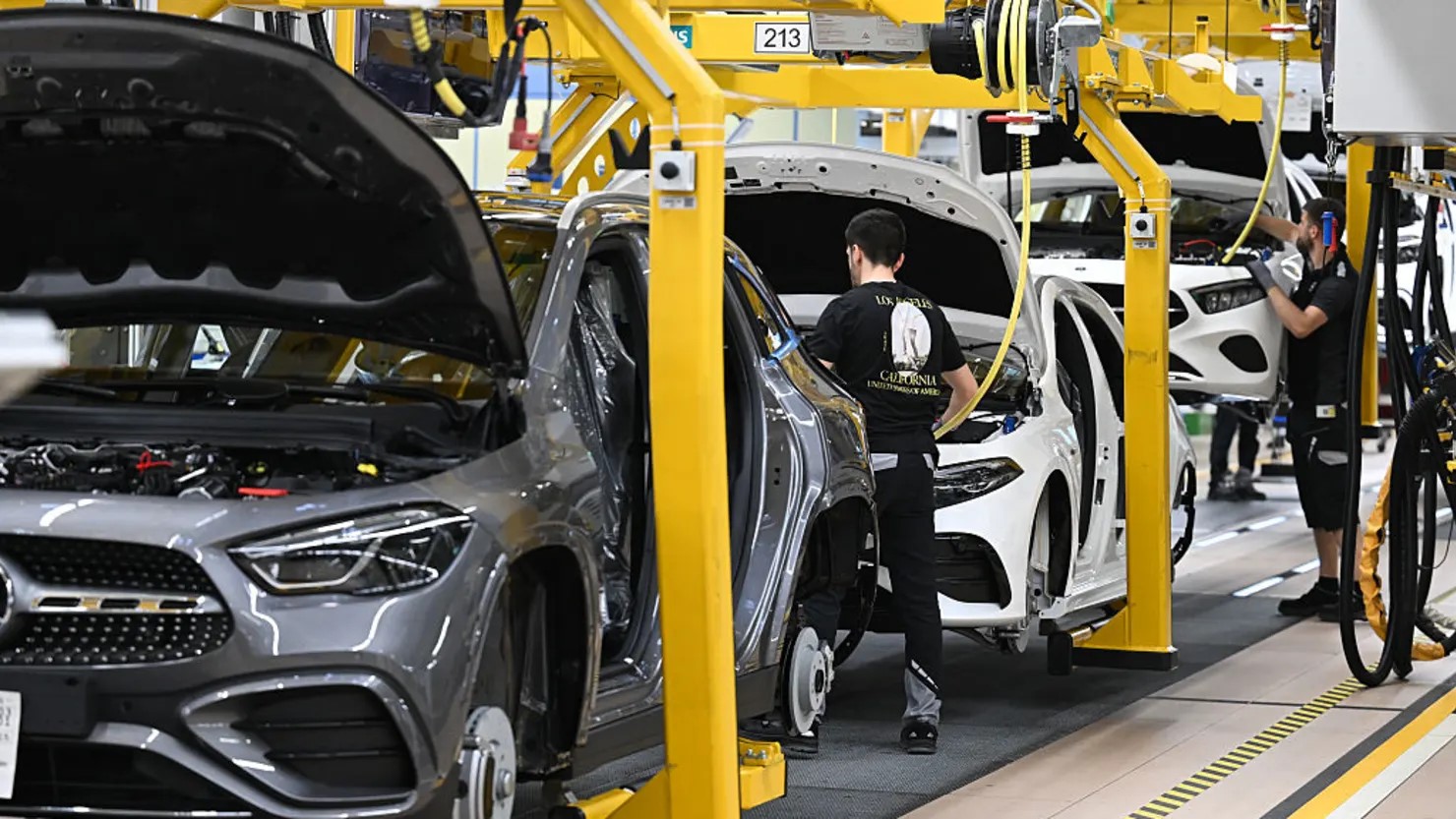
German Auto Industry Cuts Jobs Amid Mounting Economic Challenges

 :
| Updated On: 28-Aug-2025 @ 12:08 pm
:
| Updated On: 28-Aug-2025 @ 12:08 pmSHARE
Germany’s auto industry, one of the nation’s largest and most vital economic sectors, is facing one of its most challenging phases in decades, marked by sweeping job losses, declining profits, global competition, and mounting economic headwinds. According to an analysis by EY based on German statistics office Destatis, the auto sector cut close to 7% of its workforce — about 51,500 jobs — between June 2024 and June 2025. Overall, German industry shed 114,000 jobs during this one-year period, with the auto industry accounting for nearly half of the cuts. Since 2019, the sector has lost 112,000 jobs, underscoring the long-term structural decline accelerated by the COVID-19 pandemic and subsequent global economic shifts.
The EY report described the auto industry’s employment losses as unmatched by any other sector, reflecting the magnitude of its challenges. EY partner Jan Brorhilker explained that these reductions were inevitable given the industry’s current state, citing massive profit declines, overcapacity, and weak foreign markets. The report further highlighted that sector revenues fell by 1.6% in the second quarter of 2025, compared to the same period in 2024. Volkswagen, Germany’s largest automaker, recorded a sharp profit drop in Q2 2025 and subsequently lowered its full-year forecast.
Though the decline in auto revenues was slightly less severe than the 2.1% contraction experienced by Germany’s overall industrial revenues, the numbers reveal that the auto industry’s troubles are both structural and systemic.
The auto industry’s problems are not new. For years, German carmakers have been grappling with intense competition from China, which has surged ahead in terms of cost efficiency and innovation, particularly in electric vehicles (EVs). German companies have struggled to keep pace in the EV race, with many analysts blaming federal bureaucracy and regulatory hurdles that have slowed innovation and adaptability.
Adding to these challenges are global trade pressures, particularly those stemming from U.S. trade policy under President Donald Trump. Germany’s auto industry is heavily export-oriented, and the U.S. has long been one of its largest markets, where “Made in Germany” is considered a hallmark of quality. However, exports of autos and auto parts to the U.S. dropped by 8.6% in the first half of 2025 compared to the same period in 2024, reflecting both tariff concerns and weakening demand. Automakers continue to warn of the risks posed by tariffs and policy uncertainty.
Some hope emerged earlier this month when details of a U.S.–EU trade agreement were released, under which autos will face 15% duties, but only after the EU enacts legislation to reduce its own industrial levies. While this provides temporary relief, it does not eliminate the longer-term challenges.
Germany’s domestic economy has also compounded the sector’s woes. The country’s GDP contracted in both 2023 and 2024, and 2025 appears sluggish as well. After modest 0.3% growth in Q1, GDP contracted by 0.3% in Q2, highlighting continued economic stagnation. This slowdown reduces domestic demand and adds pressure on an already fragile auto market.
Looking forward, EY predicts that German auto exports to both the U.S. and China will remain under strain. The U.S. market is clouded by tariffs and political risks, while China faces weakening demand, which in turn affects German exports. With major German industrial giants embarking on restructuring and cost-cutting programs, Brorhilker warns that industrial job losses will continue in the foreseeable future.
In sum, Germany’s auto sector is caught in a “perfect storm” of challenges: declining profitability, global competition, export market weakness, regulatory inefficiencies, and a sluggish national economy. Unless structural reforms and strategic innovations are introduced, the trend of falling jobs and revenues is expected to persist, putting further pressure on one of Germany’s most important economic pillars.